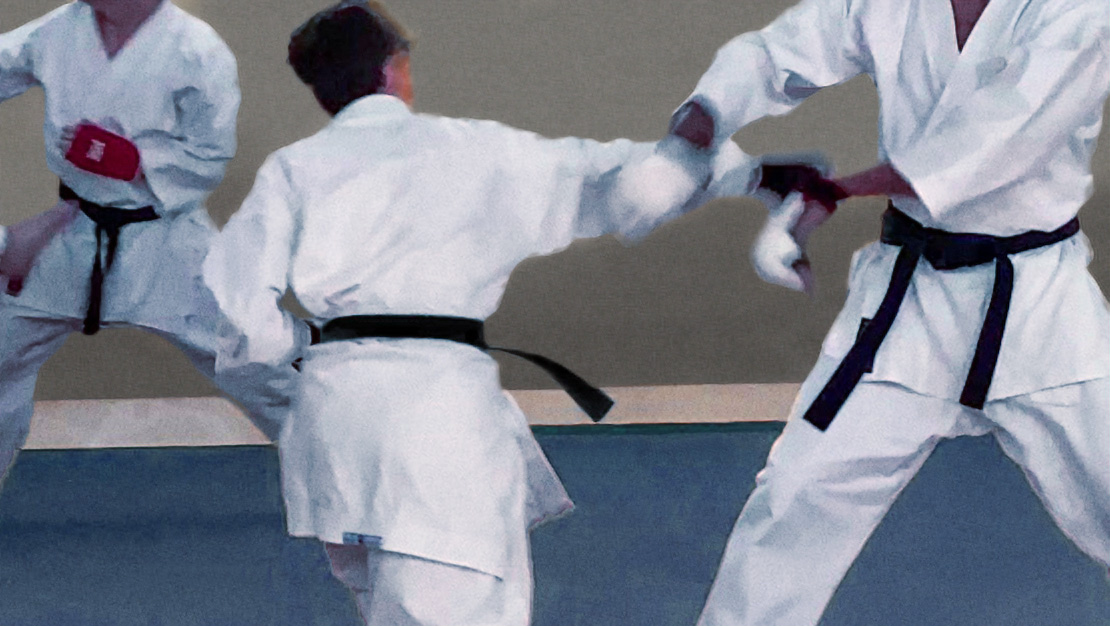Sparring and tai-sabaki
Freestyle sparring, mobility and body evasion
Agility
Sensei Lynton and Felix, sparring to practise agility and movement under attack. Encouraging Felix to move off line and evade, rather than rely on block & counter-attack.

Freestyle sparring, mobility and body evasion
Sensei Lynton and Felix, sparring to practise agility and movement under attack. Encouraging Felix to move off line and evade, rather than rely on block & counter-attack.
Felix's footwork gives him good balance and mobility and for many of Lynton's attacking charges, Felix starts to move and reposition himself for the counter. That's the essence of tai-sabaki (body evasion).
Moving off the line of attack when an opponent is launching towards you, is easier said than done. Exactly where you can move at any moment depends on your posture, balance, centre of gravity and connection with the floor (which could be slippery, wet or uneven).
"How hard can that possibly be?!" you may wonder. After all, we change direction when walking down the street all the time!
Our bodies do not always obey our instincts. That's especially true in combat, as we're influenced by fear, aggression, adrenaline and all sorts of emotions.
So we train to move tactically for combat, instead of moving (nervously) out of fear.
In most fights, you will get hit. Inside striking distance, opponents can instinctively find your body to land a blow. By moving tactically, we aim to minimise the effects of those attacks.
Moving tactically relies on timing all those factors that determine how we can move at any moment. Timing our own posture, balance, connection with the floor, and choice of attack.
Tai-sabaki is among the hardest tactics to master and a vital technique for turning defence into offence. When done correctly it puts an attacker on the wrong foot (literally).
Countering from an evasive posture steals time from an opponent and reverses the initiative. They expect to land an attack when suddenly a counter comes from an angle they least expect.
This clip shows training. It doesn't resemble a real fight, where the aim is to subdue or defeat or 'damage' an opponent. This training is to practise a specific type of movement under attack, we're not competing.
The essence of sparring like this is to condition our tactical instincts, improve our mobility and learn to read an opponent. Physical conditioning and 'toughening up', is something else.
Shotokan karate uses a minimum of protective gear (just gum shields and gloves), which means we rely on control to keep each other safe.
View more videos & clips of our training

We use cookies to make our site work well for you and so we can continually improve it. The cookies that are necessary to keep the site functioning are always on.

